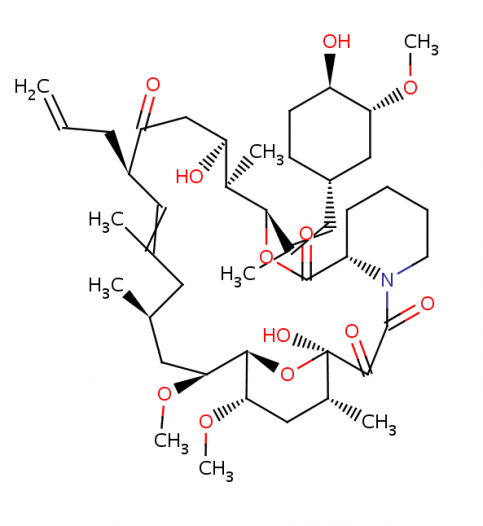This web page was produced as an assignment for Gen677 at UW-Madison Spring 2009
Chemical Genetics
The discovery of FK506 binding as a molecular function in the gene ontology of NFATc lead to a search for a better understanding of this relationship. A query of FK506 on DrugBank was completed with the following results:
The molecular formula of FK506 (or Tacrolimus) is C44H69NO12. It is described as an immunosuppressive drug that is used after organ transplant to reduce the activity of a patient's immune system thus reducing the possibility of organ rejection. The suggested molecular action is functioning through the inhibition of of T-lymphocyte activation by binding with FKBP-12. This binding recruits the formation of a complex inhibiting the phosphatase activity of calcineurin, which in turn prevents dephosphorylation of NFATc removing it from the nucleus and rendering it inactive. (1) This result of NFATc inactivation has been shown to be directly related to the onset of Down's Syndrome symptoms during embryo development. Therefore FK506 would not be a drug for the treatment of Down's Syndrome, but instead a compound that may reproduce Down's Syndrome effects if administered during development. An experiment demonstrating this hypothesis would be of increasing value when considering the effects of NFATc regulation on Down's Syndrome.
Chemical Structure of FK506

References:
1. DrugBank: http://www.drugbank.ca/search/seqquery
Margaret Noll, [email protected], last updated 4/16/2009, http://www.gen677.weebly.com
